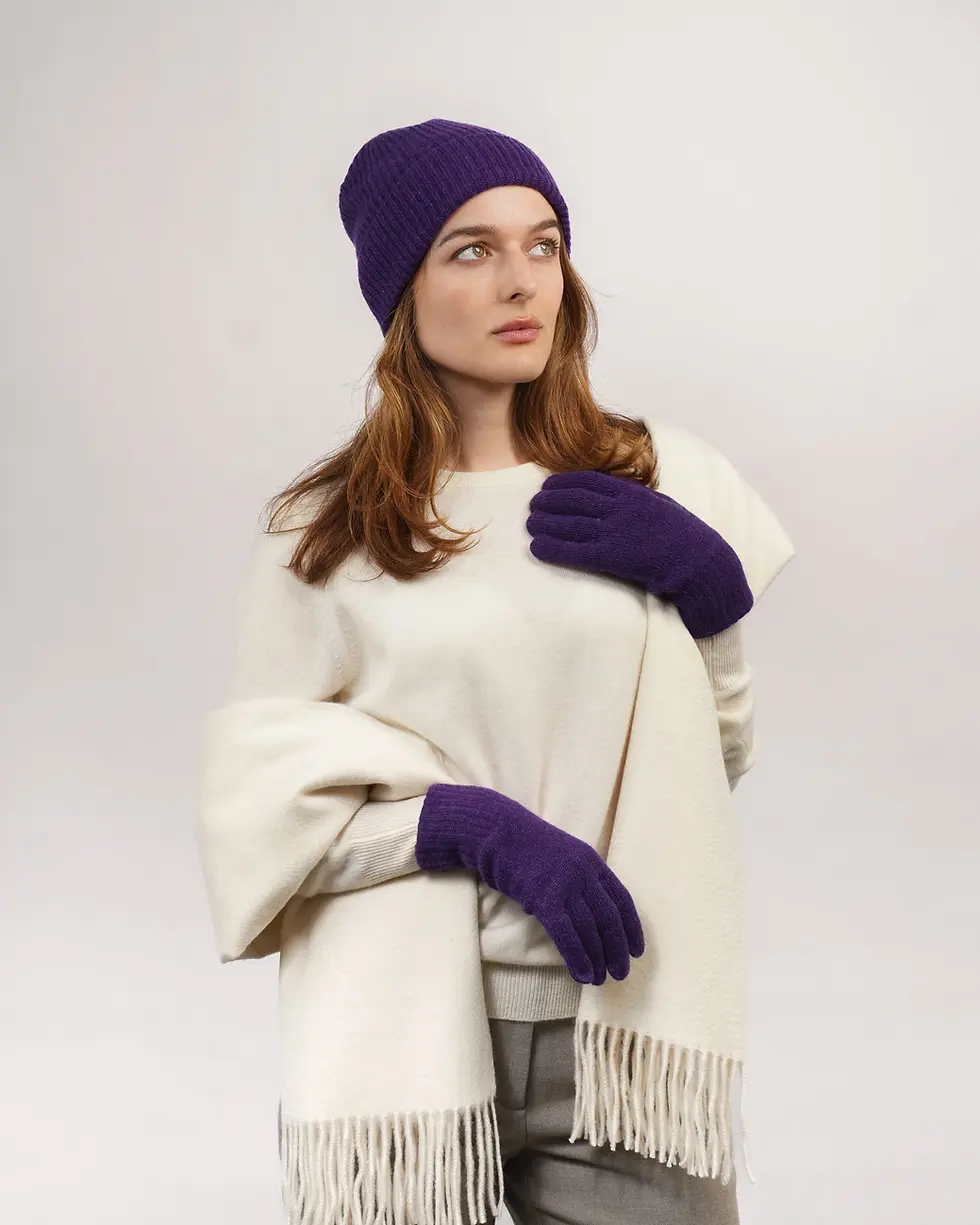How to Tell if a Scarf is Made of Real Cashmere
- Jack Ranson
- Aug 14
- 4 min read

Cashmere is often described as the gold standard of winter fabrics. Soft, light, and incredibly warm, it has a reputation that precedes it. However, with demand for cashmere at an all-time high, the market is flooded with imitations that resemble the real thing yet lack its quality and longevity.
For anyone who has ever wondered whether that elegant cashmere scarf they're about to purchase is truly authentic, the answer isn't always obvious. This guide unpacks the essentials, helping readers identify the characteristics of genuine cashmere and avoid common pitfalls. By the end, it'll be easier to distinguish between authentic fibres and clever substitutes.
Who Is Behind Real Cashmere?
Authentic cashmere comes from the undercoat of cashmere goats, which are found in Mongolia, Nepal, and parts of China and India, where they grow this fine fur to protect themselves from harsh winters. However, not all brands source their cashmere responsibly; some mix it with wool or synthetic fibres to cut costs.
Luxury brands like Lona Scott prioritise transparent sourcing and craftsmanship, offering handmade cashmere. Always look for brands that provide clear information about their products, as vague claims may indicate a lack of authenticity.
What Does Real Cashmere Feel Like?
Texture reveals a lot. Real cashmere is exceptionally soft and smooth, but never slippery like synthetics. It warms almost instantly against the skin without feeling heavy. A fake might feel itchy or unusually slick due to blended fibres or chemical treatments.
Here's a quick tactile check:
Gently rub it on your neck or wrist. Genuine cashmere feels cosy right away, without any scratchiness.
Press and release. Quality fibres bounce back instead of holding creases.
Many shoppers searching for the best cashmere scarf focus only on colour or pattern. But a simple touch test is often more telling than a glance.
When Should You Test Durability?
Cashmere is prized not just for its softness, but also for its exceptional durability. A scarf made from genuine cashmere can last for decades if properly cared for. Counterfeits, however, tend to pill excessively after a few wears or lose their shape.
Here's what durability looks like:
Even fibres across the surface. Uneven threads often signal blends.
Minimal pilling early on. Some pilling is natural, but poor-quality yarn will show heavy fuzzing within days.
A brand committed to longevity, such as those specialising in handmade cashmere, often provides care instructions and even repair services. That attention to detail speaks volumes.
Where Should You Buy to Avoid Fakes?
Authenticity often comes down to the source. Street markets and unverified online sellers are the biggest risk zones for counterfeits. A reputable cashmere store or an established designer, such as Lona Scott, reduces uncertainty.
Trusted stores typically:
Share detailed fibre content (look for 100% cashmere).
Provide certifications or guarantees for authenticity.
Offer premium presentation and packaging instead of generic plastic wraps.
Shoppers seeking the best cashmere scarves should prioritise provenance over impulse purchases. Quality isn't just about the scarf; it's also about the confidence that comes with it.
Why Is Real Cashmere Worth the Investment?
Beyond its luxurious feel, authentic cashmere delivers real value. It's lightweight yet insulating, allowing you to wear fewer layers in winter. Unlike fast-fashion synthetics, it ages gracefully, often becoming softer over time rather than degrading.
When comparing price tags, remember that the cost reflects both the rarity of the fibre and the level of craftsmanship involved. Genuine handmade cashmere requires careful combing, sorting, and spinning by experienced artisans, a process that can't be rushed.
Imitations might seem like a bargain, but they rarely provide the same warmth, breathability, or lifespan. Replacing cheap scarves every season often costs more in the long run than owning one authentic piece from a reputable cashmere store.
How Can You Verify the Authenticity of an Item Before Making a Purchase?
There's no single magic test, but a combination of checks can help. Consider these steps before committing to that elegant cashmere scarf:
Read the label carefully. Look for "100% cashmere." Phrases like "cashmere blend" or "cashmere feel" signal synthetic or wool mixes.
Perform the stretch test. Real fibres return to shape; fakes often lose elasticity.
Check for the burn test (with caution). Real cashmere smells like burnt hair when ignited and turns to ash, but only attempts this on a loose thread, not the scarf itself.
Brands known for their craftsmanship, like Lona Scott, typically make authenticity a core part of their process. Still, these practical tips empower buyers to verify before investing.
The Bottom Line
The essence of identifying genuine cashmere comes down to awareness, understanding its origins, how it feels, and why quality matters. Among the finest examples is handmade cashmere, which elevates craftsmanship to an art form. A true cashmere scarf isn't just an accessory; it's a cherished heirloom piece that combines beauty with exceptional durability.
In an era where fast fashion prevails, investing in genuine fibres aligns with a more sustainable and mindful approach to wardrobe. Whether buying from an artisan workshop or a trusted cashmere store, making informed choices ensures value that lasts for years.
The next time a perfect scarf catches your eye, pause and ask: Does it feel right, come from the right source, and offer the longevity expected from authentic cashmere? If the answer is yes, then that piece isn't just fabric, it's a timeless statement.









Comments